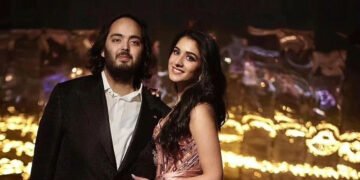At Elegante by Michelle J we’re Jewish wedding experts, working with couples across all levels of observance. Among the questions we get probably the most are around Jewish wedding timelines, the traditions and customs generally found at a simcha, and the way exactly every part will work on the day. Here, we outline the long-established format of a Jewish wedding, and highlight how your personal celebration will be tailored in adherence – whether you discover as orthodox, Jew-ish or are having an interfaith marriage.
Jewish wedding timelines are made up of weavings of traditions, history, beliefs and faith, the core of which lead back to the Torah and Talmud. Over centuries, layers have been added and today we’ve got a wedding ceremony and celebratory format that’s emotional, joyful and meaningful in equal measure. Before we explore each tradition in turn, it is necessary to notice that we work with couples of all levels of Jewish faith – we consider in balancing the customary with the contemporary, navigating and honouring family dynamics, and supplying you with the marriage you really need. We’ve highlighted those parts of the timeline that are required for a Jewish wedding to be legally binding, and indicated where other elements are ceremonial and, subsequently, optional.
Jewish Wedding Timelines: The Format
Pre-Ceremony
Before the ceremony begins, Jewish couples can decide to undertake Kabbalat Panim – ‘receiving faces’. For the groom this takes the shape of a Tish, where he meets with the opposite men at the marriage in a personal room for singing, dancing, religious readings and general joviality – and, importantly, the reading and signing of the ketubah. The signing, which will need to have two witnesses, is a legally binding a part of Jewish wedding timelines.
Meanwhile, the bride may have her own Kabbalat Panim. This is usually less common amongst Elegante by Michelle J couples, as the ladies often decide to spend the time along with their closest family and friends right as much as the purpose of arrival for the bedeken. Traditionally, the bride doesn’t sign the ketubah but some denominations do now see each partners sign, as an emblem of their mutual commitment.
Bedeken
The bedeken is all the time a stunning, emotional moment in Jewish wedding timelines – it’s the primary moment the bride and groom see one another, often surrounded by parents, siblings and a rabbi, and is hugely symbolic and intimate in nature. This ceremonial moment is the act of veiling the bride, historically used to make sure the groom was marrying the right person. Happening before the ceremony, this will be done in a personal room or, as a lot of our couples prefer, on the aisle in front of guests before the ceremony under the chuppah begins.
This shouldn’t be a compulsory a part of the Jewish wedding day, nevertheless it is a stupendous tradition. A lot of our less religious and specifically our US couples also decide to have a ‘first look’ (before the bedeken) where bride and groom meet privately before the bedeken, and I personally love this section of the day.
Chuppah ceremony
For a Jewish wedding to be legally binding, the wedding must happen under the chuppah. A chuppah need only be 4 posts suspending a cloth or sheet, but at Elegante by Michelle J we like to go big and delightful with the design. Our couples generally go for abundant floral chuppah decor, and we encourage you to essentially consider how it’s going to look – that is an important a part of the day, the guts of the marriage, so why not bask in an exquisite, living cover when you are blessed in marriage.
There are a lot of ceremonial acts that occur under the chuppah, however the only elements which are compulsory for a legal Jewish marriage are the giving and acceptance of a hoop from groom to bride, two male witnesses, and the presence of the couple under the chuppah cover. The remaining customs and traditions often seen during this a part of the day are beautiful, moving and symbolic, and include:
- The procession down the aisle. Often the bride and groom are accompanied by each parents.
- Circling of the groom by the bride – seven times, traditionally.
- Reading of the ketubah.
- Delivery of the Seven Blessings – the Sheva Brachot, recited over a cup of wine.
- Breaking the glass – representing the destruction of the Temple at Jerusalem, a reminder of Jewish history even in a moment of joy.
- Music and Israeli singing, which will be very emotive – finding the proper person to sing under your chuppah could be very vital
Post-ceremony
After the celebratory chuppah ceremony, the bride and groom may optionally go off together for Yichud – a couple of moments of privacy between the 2 of them, symbolising the completion of the union. A lot of our couples select to do that, not all the time for religious reasons but often simply to have a while to reflect, have a good time just the 2 of them, and reconnect before joining their guests for the festivities still to return.
Next on traditional Jewish wedding timelines comes dinner and dancing, with the eating preceded by classic Israeli dancing and the Hora, the act of lifting the bride and groom up on chairs. During this time traditional dances are performed, sometimes with the boys and ladies separated depending on levels of observance. That is an utterly joyful a part of the day, and cold towels will be handed out at the top while guests take their seats for his or her meal.
Throughout the dinner, Jewish weddings often proceed with dancing sets between courses – for more information on selecting your musical entertainment, read our dedicated blog about the probabilities here.
How do Jewish wedding timelines differ at destination weddings?
If you happen to’re seeking to get married abroad, you’re in the fitting place – we’ve got over a decade’s value of experience planning Jewish destination weddings. In some ways the timeline stays the identical as it will in your house country – the most important difference is that we start later within the day, particularly if you happen to are marrying in a hot country. Holding your ceremony after the height sun hours means the marriage is so much more comfortable for you and your guests.
Some couples worry that this later start means cutting short their party time later within the evening. If this is vital for you, we will decide to have a shorter drinks reception, discover a venue that can offer a late licence, or organise an afterparty to make sure you get all of the dancing hours you would like. We generally find, though, that guests who’ve travelled a protracted technique to be at your wedding are often grateful for an inexpensive finish time – there has never been an Elegante by Michelle J wedding with ‘not enough of a celebration’!
The right way to incorporate Jewish wedding traditions in interfaith weddings?
As we mentioned earlier, we regularly work with interfaith couples where one partner shouldn’t be Jewish. In these cases, we work closely with you to find out how you must balance your wedding. Some couples resolve to have their Jewish wedding ceremony on someday and a second ceremony the following, for instance Chhaya and Harry who married in Spain and celebrated each a Hindu and a Jewish wedding on consecutive days. It’s also entirely possible to have a blended wedding day; we’re huge advocates of getting the marriage you really need and that feels meaningful and private to you, so if which means combining traditions and customs we are going to enable you make that work.
Our popularity for delivering exceptional Jewish weddings each at home and abroad means you possibly can trust us to plan, design and coordinate your celebration with finesse, tact and a spotlight to detail. Showstopping Jewish weddings are what we do – get in contact to experience the signature sparkle of Elegante by Michelle J’s full planning service.
Images by David Bastianoni, James Mason, Alex Wysocki, Violeta Minnick


















